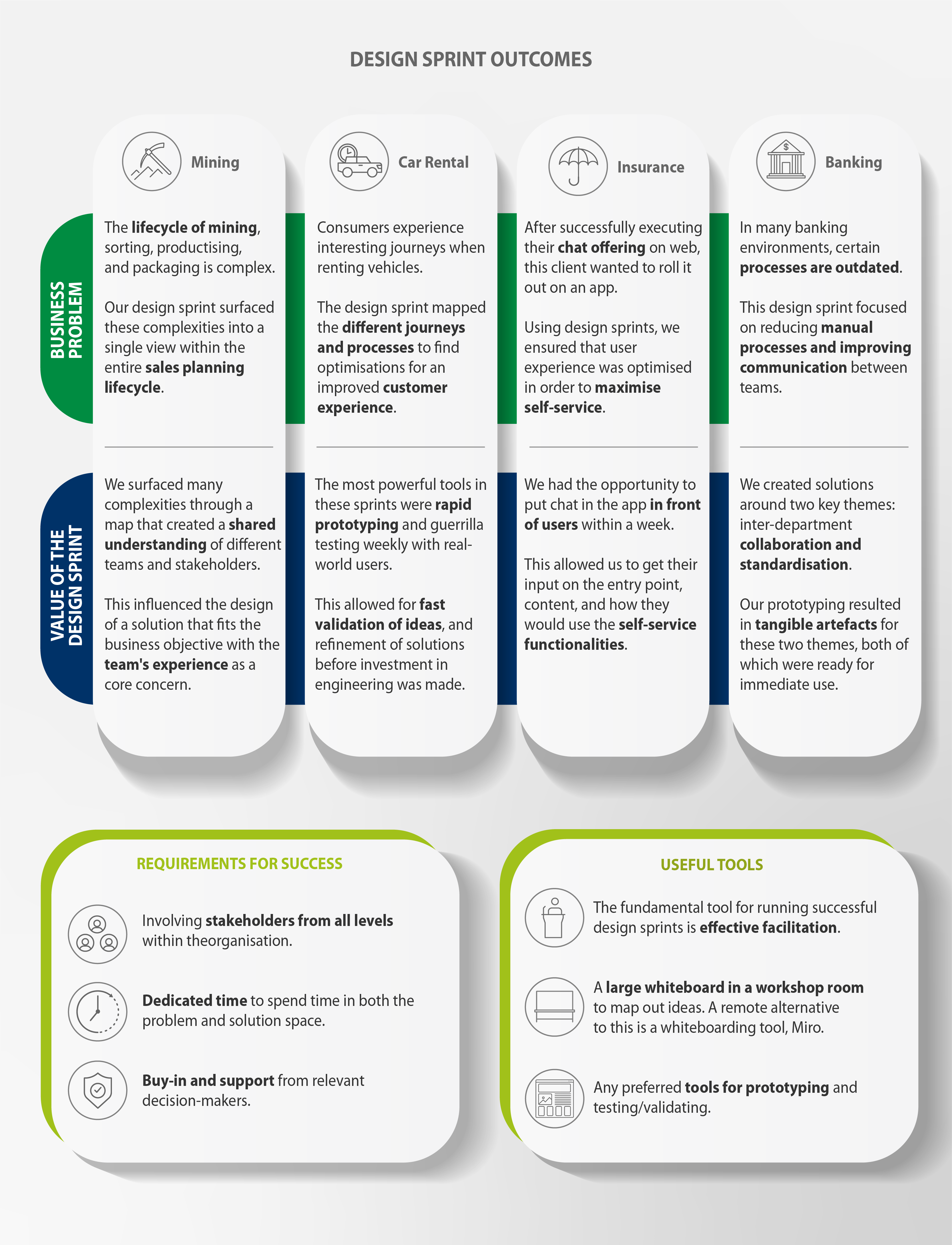- 19 oktober, 2020
- Article - Innovation in Business
There are few things as powerful as getting the right people in the same room to unpack a problem. A seemingly simple recipe for problem-solving – a design sprint – does exactly that. This five-day problem-solving technique is becoming a go-to for companies who want to test ideas, develop a new product, or overcome a pressing business concern.
Design sprints are mainly used in two instances:
- Innovation: When you’re on a mission to reinvent your business
- Wicked problems: Concerns that are difficult to solve because of incomplete, contradictory or changing requirements
The magic of this approach lies in getting different stakeholders to talk to each other. This creates a problem-solving forum where stakeholders work through complex topics as a team – through mapping, sketching and prototyping – with the help of guided facilitation. A facilitator plays a crucial role, and should guide the group, spur questions, extract thoughts and ideas, find patterns, and depict it on the “shared brain” (the map).
This method is by no means a silver bullet. There are many instances where design sprints won’t give you the result you’re searching for. But, used correctly, it’s a dynamic approach that can be used to diagnose and solve critical business problems, such as unsatisfactory customer experience or tedious manual processes, in a short period of time.
We surveyed four Entelect teams who have successfully facilitated design sprints at various blue-chip enterprises in the banking, insurance, car rental and mining industries, to understand what kind of problems this method can solve and how they went about solving it. The below canvas highlights the range of business problems being tackled, where the value of the sprint ultimately lays, what the teams required for the approach to work well, and what tools were utilised.

Consider any problem that your organisation or team is currently experiencing. By including representatives from functions right across the organisation, we gain perspectives that are otherwise hidden or overlooked. These people genuinely have experiences and ideas of their own, that cannot be guessed or assumed. The function of design sprints is to create a mechanism through which you can bring diverse people together for combined problem-solving, by guiding and facilitating conversations that would usually not take place.
Design sprints help untangle the messiness of ambiguity, and give some structure to solving any problem and discovering quick wins. This learn-fast-fail-fast approach not only leverages a diversity of ideas and perspectives in just one week, but also forms stronger relationships and builds trust during the process, ultimately enabling participants to collaborate and solve future problems.



